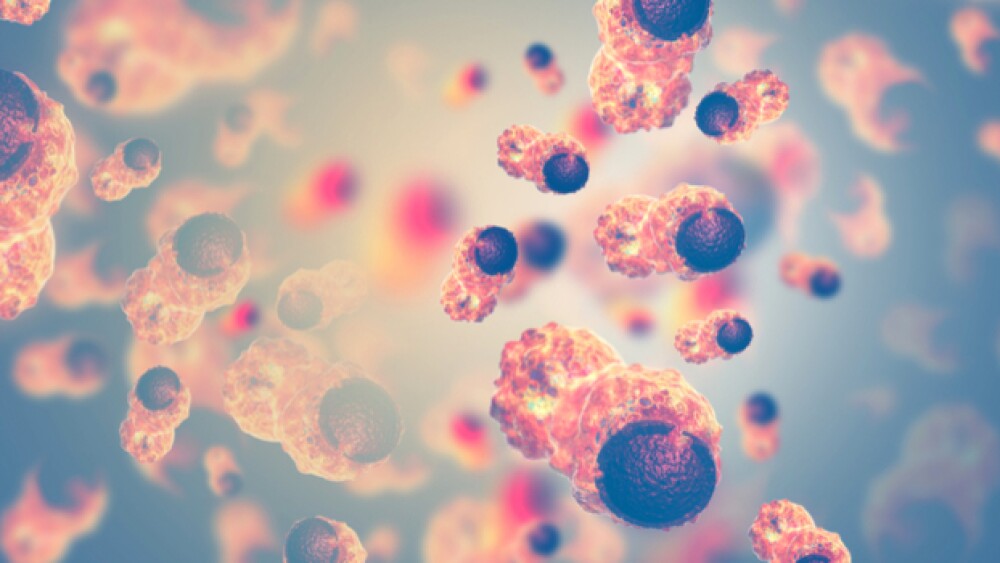Researchers have hunted for years to find a commonality across all cancers, a so-called “silver bullet” that ties them all together. Researchers from the University of Queensland’s Australian Institute for Bioengineering and Nanotechnology have identified a nano-scaled DNA signature that seems to be common to all cancers. This has the potential to be used as an early cancer detection test, what is often called a liquid biopsy.
Researchers have hunted for years to find a commonality across all cancers, a so-called “silver bullet” that ties them all together. Researchers from the University of Queensland’s Australian Institute for Bioengineering and Nanotechnology (AIBN) have identified a nano-scaled DNA signature that seems to be common to all cancers. This has the potential to be used as an early cancer detection test, what is often called a liquid biopsy, and if the research pans out, could open up new pathways for universal cancer treatments.
The researchers’ work was supported by a grant from the National Breast Cancer Foundation. The study was published in the journal Nature Communications.
Abu Sina, an AIBN researcher, stated, “Because cancer is an extremely complicated and variable disease, it has been difficult to find a simple signature common to all cancers, yet distinct from healthy cells.”
Sina, along with Laura Carrascosa and Matt Trau, all with AIBN, focused on circulating free DNA. Cancer cells, like normal cells, are always dividing and dying. When they die, they often burst, which releases everything inside those cells, including DNA. It then circulates in the bloodstream. Many liquid biopsy tests focus on specific cancer-related sequences in the free-floating DNA for early detection. The AIBN research is a little different.
The scientists looked at epigenetic patterns in cancer cell genomes and in healthy cells, looking specifically for methyl groups. Methyl groups, essentially a carbon atom with three hydrogen atoms attached to it, play a role in switching genes on and off based on a number of factors, such as whether they’re inherited from the mother or the father, various environmental cues, and, as some research is indicating, trauma and other stressors.
Methyl groups are spread across the genome, but the AIBN team found that cancer cells’ genomes often lack methyl groups except for “intense clusters of methyl groups at very specific locations.” The researchers dubbed this the cancer “methylscape,” and they observed it in every type of breast cancer they studied, as well as in other cancer types, including prostate cancer, colorectal cancer and lymphoma.
“Virtually every piece of cancer DNA we examined had this highly predictable pattern,” stated Trau. “It seems to be a general feature for all cancer. It’s a startling discovery.”
As part of their work, they discovered that when these methylscapes, in a solution, make cancer DNA fragments fold into three-dimensional nanostructures—and these nanostructures like to attach to gold.
With that knowledge, they designed a lab test that uses gold nanoparticles that change color depending on if these 3D nanostructures of cancer DNA are present. It can be performed on a single drop of blood.
To date, they have tested the assay on 200 samples across different cancer types. In at least some of the cancer types, the accuracy rate is as high as 90 percent. There are concerns about false positives, but in the burgeoning field of liquid biopsies, this group may have leaped to the front of the pack.
Companies either offering some version of a liquid biopsy or working on them, include Guardant Health, Karius—whose liquid biopsy is for infectious diseases, Freenome, Apostle and GRAIL Bio. Guardant offers its Guardant360, which costs about $6,800 and takes seven days. The data being collected with the test is being used to develop its next-generation assays, such as Lunar-1 for cancer recurrence and Lunar-2 for early cancer detection.
Dino Di Carlo, director of cancer nanotechnology at UCLA, told USA Today that the Australian research required further confirmation. “You don’t expect all tumors to have the same methylation pattern because there’s so many different ways that cancer can develop. There are some pieces that don’t exactly align logically.”
“We certainly don’t know yet whether it’s the Holy Grail or not for all cancer diagnostics,” Trau stated, “but it looks really interesting as an incredibly simple universal marker of cancer, and as a very accessible and inexpensive technology that does not require complicated lab-based equipment like DNA sequencing.
Click here to see thousands of life science jobs on BioSpace’s job board.





